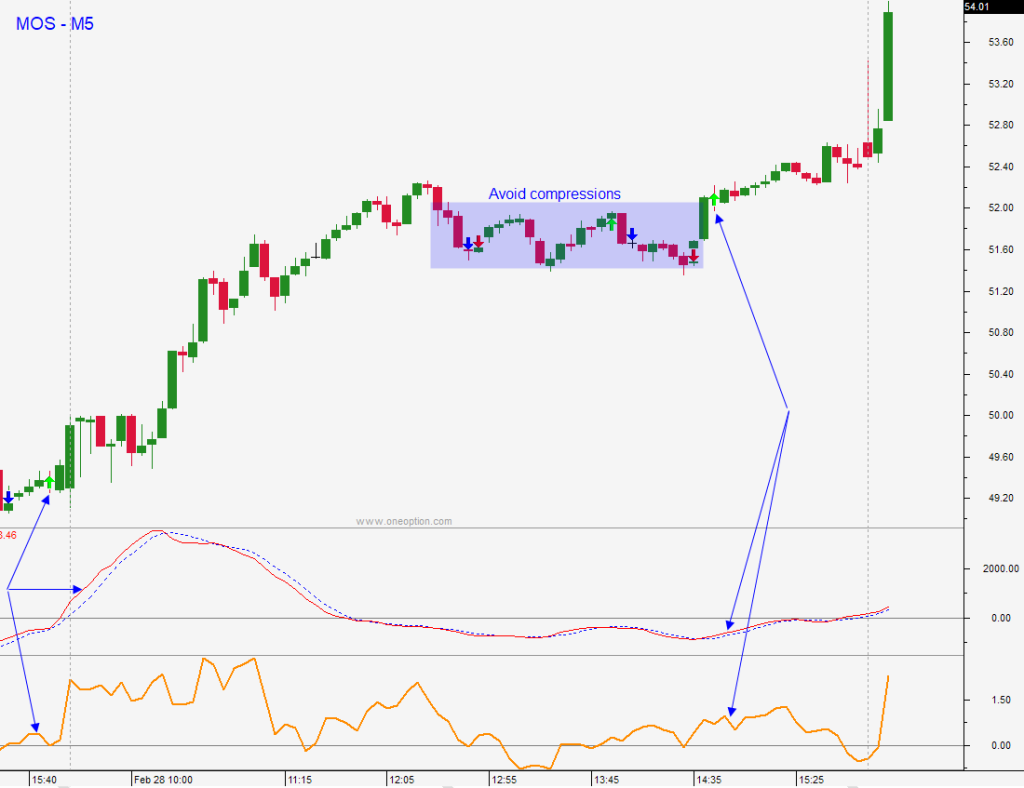Relative Strength & Weakness
Author
PeteThis article is part of our Introductory Series. Visit Start Here to learn more.
Stock Second
Many novice traders skip the first step. They read a headline or they fall in love with a stock and they are oblivious to market conditions. We did not fall into that trap. We have our market bias and it is bullish on a longer-term and a shorter-term basis. We are going to wait for the next bullish 1OP cycle for the S&P 500 and we are going to buy the strongest stock in the index. In the next section, we will describe an edge that we have been trading for more than 20 years and it is a game-changer.
Relative Strength
There is an index called RSI (Relative Strength Index). It measures a stock’s current strength relative to its previous strength. This is a worthless indicator – do not use it.
We compare the stock’s recent price movement to the S&P 500. When the market is moving lower, we want to find stocks that are treading water or that are moving higher. This is what we call relative strength and to avoid confusion we will refer to this as 1OSI (1Option Strength Index). In the daily chart below you can see how the market was declining and XOM was moving higher. This is what relative strength looks like.

Here’s why this price behavior is so powerful. We know that 75% of all stocks follow the market. During a market decline, institutional programs sell baskets of stocks and investors take gains on their stock positions. When a stock is able to “defy gravity” it is a sign that institutions are accumulating. The smart money does not care about the market dip; they want to own this stock and any temporary profit taking in the stock plays right into their hands. Instead of driving the stock higher with their buy orders, this market dip is providing an opportunity for them to quietly accumulate shares. This is a gigantic “tell” and here is how we use it to our advantage.
When the 1OP indicator for the S&P 500 is in a bearish cycle and the market is drifting lower, we are searching for stocks that are strong relative to the market. This tells us that institutions are buying. When the market finds support we will start buying these stocks. If by chance the market continues to sink lower, these stocks will tread water. S&P 500 traders would lose money in this scenario, but stocks with relative strength will provide us with a cushion because institutions are buying shares. If the bullish cross for 1OP produces a market rally, these stocks will shoot higher. In the next section, we are going to explore combining these indicators.
Trade Signals
1OP works great for the S&P 500 and it also works great for stocks. 1OSI is a way for us to gauge relative strength so it is only natural to combine both indicators. When 1OP for the stock is in a bullish cycle and when 1OSI > 0 a buy signal is generated. The system sticks with that signal until the stock breaks technical support. When 1OP is in a bearish cycle and when 1OSI < 0 a sell signal is generated for the stock. The system sticks with that signal until the stock breaks above technical resistance.

The puzzle pieces are starting to come together, but we need a way to find these stocks. The next section is called Options Last and we will show you the tools we have developed to help us find the best stocks.

